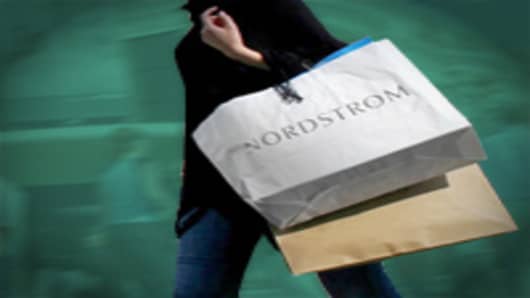Luxury retailers are increasing their reliance on outlet stores to meet shoppers' desire for lower price points, but one upscale department store's off-price strategy runs the risk of hurting its brand equity in the long-term, Needham & Co. analyst Christine Chen said.
As shoppers actively seek out bargains, the close proximity of Nordstrom's full-price stores to its discount Nordstrom Rack locations—the majority of which are placed outside of traditional outlet centers—could encourage consumers to shift their spending to the lower-priced options, Chen said.
"With Rack opening in non-outlet center malls within close driving proximity, your customer definitely will cross-shop," she said. "The lines become a little more blurred."
Outlet stores are often considered a good strategy for luxury retailers looking to eliminate excess inventory without diluting their brands.
In the aftermath of the recession, they've also become a successful way to capture the spending of aspirational shoppers—consumers whose income isn't as high as a true luxury customer but who will splurge on the right item. This is important because aspirational shoppers were responsible for a good chunk of spending during the retail boom years that preceded the recession.
As such, Saks and Nordstrom have both expanded their off-price presence, this year planning three and 16 new stores, respectively. Bloomingdale's recently announced that it too will enter the space, with its first four outlet stores opening later this year.
But the key difference, Chen said, is that several Nordstrom Rack stores are located less than a mile away from their full-price locations.
Paired with the fact that the retailer's full-priced inventory already offers lower price points than competitors such as Saks or Macy's Bloomingdale's, this could hurt the company's core business, Chen said.
"As a customer I appreciate that it's [so close], but it really shouldn't be," Chen said.
Even more detrimental to Nordstrom's strategy is its Manhattan debut. After it was unsuccessful in securing space for a traditional store on glitzy Park Avenue, the retailer opted to go ahead with plans to open a 32,000 square-foot Rack location near New York City's Union Square in May.
Though the Union Square area is thought to house a lower-income demographic than typical of Nordstrom shoppers, its heavy traffic flow—and the fact that it will be the only Nordstrom on the island—would likely make the store lure in its target shoppers, Chen said.
"You're making your debut in Manhattan with an outlet store? I find that a little bit odd," she said. "I just kind of wonder what that does to the Nordstrom brand."
But Nordstrom spokesperson Colin Johnson said the company wanted to take advantage of the available location, and said the retailer still hopes to open a full-line Manhattan location in the future. He emphasized that Rack's current strategy is nothing new from 30 years ago, when it created the first off-price location around the corner from its flagship Seattle store.
"We've found that the two stores really complement each other," he said. "This has been about us just trying to find new ways to better serve our customers."
Morgan Stanley analyst Michelle Clark said Nordstrom did an exceptional job maintaining its brand equity through the recession by quickly reducing its average unit price by about 10 to 15 percent, which helped draw hesitant consumers back to the store. In February, she upgraded the company's shares from underweight to equal-weight, citing a more stable consumer and traction in company initiatives.
Nordstrom does appear to be gaining some traction. In March, its full-line same-store sales rose 17.6 percent, while same-store sales at Rack increased 4.7 percent.
Disclosures: Within the last 12 months, Morgan Stanley has provided investment banking services to Nordstrom.
More from Consumer Nation:
- Rollback Those Fears About Wal-Mart Prices
- Want to Pick a Winner in Retail? 3 Brands for the Long Haul
- J. Crew CEO: Retailers Are Back, Not Consumers
- March Madness for Women—The Race for Luxury Goods
- Ritz-Carlton: Biggest Bargain Shoppers Spend the Most
Questions? Comments? Email us at consumernation@cnbc.com



